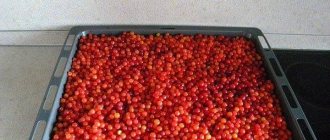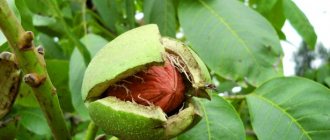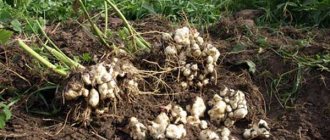Late autumn and winter is the right time to treat yourself to tasty and healthy persimmons. But unfortunately, it is not always possible to purchase this fruit as sweet. Sometimes it happens that persimmons look so delicious, but you start eating them and your mouth feels sour.
I think everyone has encountered this. What can be done to make persimmons less sticky? It turns out that several truly effective methods have long been invented for this at home. And I would like to introduce you to them in this article.
It turns out that substances called tannins are to blame for the appearance of astringency and viscosity. And to make these orange fruits tasty again, the tannins just need to be destroyed. And this can be done in a variety of ways.
Freezing
What to do if persimmon is very astringent? A simple method like freezing can help here. To do this, each fruit must be wrapped in plastic cling film, preferably in two or three layers. Then put it in the freezer and forget for a day.
After this, take out the frozen fruit, put it on the kitchen table and let it thaw on its own at room temperature. Of course, the fruit will lose its original appearance. But it will become sweet without a hint of viscosity.
And now you can make smoothies from it, use it as a filling for baked goods, or make such a delicious dessert as ice cream with persimmon. And it will also be very pleasant to eat fresh. And useful.
Drying fruits
Properly dried persimmon turns into a delicacy. The color of dried fruits is darker than fresh ones. Sometimes they are covered with a thick white coating of fruit sugar released from the inside. Strong darkening should not occur, unless we are talking about persimmons of the Chocolate Korolek variety. When dried, it takes on the color of dark chocolate.
The product is considered very useful, since while preserving all natural substances, its nutritional value increases. The shelf life of dried fruits also increases significantly, and its storage conditions are much simpler than fresh ones. There are several recipes for drying: whole fruits or chopped.
Entirely
This method involves drying the fruit as a whole. In some cases, the skin of the berries is cut off, but this is not necessary. In the southern regions, with very hot weather, suitable conditions have been created for natural drying. It is enough to hang the persimmon in a ventilated place, tying it by the stalks, and cover it with an insect net.
- Wash and dry the persimmon thoroughly.
- Dry the fruits. It is most convenient to use a special fruit dryer at a temperature of 40-45 °C. Typically, the devices are equipped with mesh trays and a fan, so that almost ideal conditions are created.
- Another drying method is on a baking sheet in the oven at a temperature not exceeding 50 °C. The principle is the same, but it is much more difficult to keep track of the uniform distribution of heat, and periodically you will have to open the door for ventilation.
- Within 6-8 days, the size of the berries will approximately halve, and they will become tougher to the touch.
- After this, they need to be put in cloth bags to allow ventilation.
Pieces
Drying rules:
- The fruits are pitted and then cut into medium-sized slices.
- Dry in an oven or fruit dryer at a temperature of 40-50 °C.
- The treatment is carried out for 5 days until the pieces are completely dry.
- Place for further storage in cloth bags and keep in a dry, ventilated area.
How to store dried persimmons
It is better to store dried fruits in linen bags in a dry place at room temperature. For example, in a kitchen cabinet or on shelves in a pantry. It is necessary to ventilate them periodically to prevent dried fruits from compacting and spoiling. The shelf life of persimmons is 2 years.
How do you store persimmons?
In the fresh
Dried
Ripening in the refrigerator
Persimmons bought at the market or in a store, which are very astringent to the mouth, can be ripened in fruit boxes. And then put them in the refrigerator. It should remain in this state for several days.
Every day, be sure to turn it from side to side and make sure that mold does not form. After all, it is prohibited to eat moldy foods. Ripening in the refrigerator is especially useful if the purchased persimmon turns out to be dense, with a hard skin.
How to bring unripe persimmons to maturity
You can ripen green persimmons at home either naturally or using other means, for example, warm water or a lime solution.
The natural way
Persimmon of all varieties does not have good shelf life and transportability. Therefore, these fruits are picked while still green and allowed to ripen on the way, as well as during storage in the store. Semi-ripe or even green fruits are often found on the shelves.
They can also be purchased and left to ripen naturally:
- Place in the refrigerator on the bottom shelf and let sit for several days.
- Leave at room temperature in a well-ventilated area.
Advice! It is better to put ripened fruits in a dark place - you can leave them at room temperature or move them to the refrigerator. Then the fruit can be preserved for 1.5–2 months.
Warm water
You can get rid of the unpleasant astringent taste by holding the fruits in warm water (37–40 degrees, your hands should be a little hot). The persimmons are placed to ripen in a basin, filled with warm water and left for 10–12 hours. This is one of the easiest and fastest ways.
Advice! To understand whether the fruits are ripe or not, just press on the surface.
If the skin has softened, the ripening processes are already underway. As soon as the fruits change color, they can be eaten.
You can ripen persimmons quickly enough by placing them in warm water overnight.
Ethanol
To speed up the process, you can take a needle and disinfect it in ethyl alcohol, vodka or other strong alcoholic drink. Then make several punctures in the peel and leave to lie for several days at room temperature. In this method, alcohol is needed only as an antiseptic - the ripening process will occur precisely due to damage to the peel.
There is another way: finely chop the unripe fruits into pieces and put them in a container where the alcohol used to be (only the smell should remain, without liquid). Seal with a lid and let stand for a week at room temperature. There is no need to be afraid of the smell of alcohol - it will evaporate (to do this, you need to open the lid and simply place pieces of already ripened pulp on the table).
Freezer
The freezer will also help the fruit ripen. They are washed, thoroughly dried and placed in a chamber for 10–12 hours. Then take it out and defrost at room temperature. The advantage of this method is its simplicity and speed. But when freezing and thawing, persimmon fibers are destroyed. As a result, the consistency becomes very soft and mushy. Therefore, such fruits are not served on the table - they are eaten immediately.
Using other fruits
Another effective way to help fruits ripen is to keep them in a bag along with any apples (green, yellow, red) or tomatoes. These fruits produce ethylene gas (C2H4), which allows persimmons to ripen in 3-4 days. The method is convenient not only because of its simplicity, but also because it allows even completely green fruits to ripen.
If you put green persimmons in a bag with apples and leave them at room temperature, they will ripen in 3–4 days
Advice! Another method is to place the fruits along with bunches of bananas in cardboard boxes.
The top can be covered with film or bags, but not hermetically sealed. Ripening also takes 3–4 days.
Lime solution
If you have slaked lime, you need to take half a glass of powder (100 g or 5 tablespoons) and dissolve it in 1 liter of water at room temperature. Mix thoroughly and add fruit. Leave for 2-3 days (maximum for a week).
Use warm water
Some housewives recommend using such a simple and reliable method as ripening in water. To do this, the fruit must be pierced in several places and placed in a pan with hot water. Yes, the water should be hot, but not boiling.
As soon as the water cools down, it must be replaced with hot water again. The duration of the procedure is 12 hours. After this, the fruit must be eaten on the same day, since they cannot be stored.
If you don’t like the fact that persimmons will simmer for so many hours literally in boiling water, then you can use the simplest method. I will describe it next.
How to store persimmons in the freezer?
In the freezer, the fruits can be preserved until next winter. At the same time, they will have an almost unchanged vitamin and mineral composition and taste characteristics after defrosting.
For freezing, you can use either whole fruits or cut into pieces. First, the persimmons must be thoroughly washed and dried. You should choose only ripe fruits for this storage method, since there will be no opportunity for them to ripen.
If you need to freeze whole fruits, they should be placed on a tray with the stems down, making sure that the fruits are not touching each other. Once the persimmons are frozen, you can place them in one bag and put them back in the freezer. This way it won’t take up much space, and at the same time it will be convenient to get it in the right quantity.
When freezing persimmons in pieces, you must first remove the seeds and stems, then cut the fruit into slices or cut into cubes, place in portions in bags and place in the freezer. Defrost chopped persimmons in cold water without removing them from the bag. Fruits cannot be re-frozen, like most other foods.
Heat in microwave
Wash the persimmon, get rid of the tail, pour a spoonful of honey into the hole and place the fruit in the microwave for 10 seconds.
This time is enough to deprive the persimmon of its viscosity, but it is too short to destroy the vitamins.
By the way, this method of processing persimmons is suitable for those who suffer from various digestive disorders and periodically suffer from diarrhea or constipation. After a short stay in the microwave, persimmons will not harm even a weak stomach.
Storing persimmons without refrigeration
Without a refrigerator, persimmons can be stored for only 3-4 days. To do this, it is better to place the fruits in the darkest places in the apartment with good air circulation. It is important to monitor the condition of the fruit and prevent overripening. As soon as the fruits become soft and acquire a rich color, they should be moved to cold or eaten.
In a bag of bananas
This is one of the most proven and reliable methods for getting rid of persimmon viscosity. It's simple. Place several orange fruits in a plastic bag.
Also place one banana there, preferably not completely ripe. Tie a knot and place the bag on the kitchen table. It is advisable that direct sunlight does not fall on it. You should also make several small holes in the bag for air circulation.
If you don’t have a plastic bag at hand, you can safely take a paper one.
After 2 - 3 days, you will be able to get tasty and sweet persimmons out of the bag, which will no longer be so viscous and tart in taste.
How to choose the right persimmon?
Hundreds of varieties of this fruit are grown in the world, but in Russia people are most familiar with the “Korolek” variety. This is the kind of persimmon we love, which is why it is presented in abundance on the shelves. This fruit is brought from different countries - Morocco, Spain, Armenia, and is also grown in the warm Krasnodar region.
The “Korolek” persimmon has the sweetest and most delicate taste.
It has a dark red skin, and the flesh is orange-chocolate in color. But persimmon of this variety is not always successful, since it all depends on whether pollination has occurred or not. If it was not there, the fruits will be astringent and tart.
To buy really successful fruits, you need to consider the following features of choosing this fruit:
- The skin of high-quality persimmon is smooth and shiny; a slight whitish coating is acceptable. At the same time, there should not be any damage to it - either natural (rot, cracks) or received during transportation.
- The color of ripe and sweet fruits is dark orange or almost brown. If the persimmon is too pale or yellow, it is not worth buying.
- If the color of the fruit is uneven, that is, closer to the stalk it becomes greenish, this indicates the immaturity of the persimmon.
- The fruit should be soft to the touch, but not too soft. Overripe fruits do not store well and have a different texture.
- The shape of the fruit should be almost round. Elongated persimmons are usually unsweetened and tart.
- The stalk should be dry, brown or almost black.
- If you lift the leaves, the base under them will be brown for sweet persimmons, and too light for tart persimmons.
- The sweetest fruits usually have a “shirt” of dark stripes.
- Since pollination affects the taste of the fruit, you need to examine the persimmon in cross section - the presence of seeds indicates that it has been pollinated and will be sweet.
- The fruits should be approximately the same size and shape, which also indicates the quality of the fruit.
You need to choose persimmons yourself; you should hardly trust the seller, since it is not in his interests to select and evaluate each fruit. Fruits should be transported in a box, container or basket with low sides, this way they will be better preserved.
In a bag of apples
This is one of the most popular ways to ripen fruit. Moreover, apples not only help persimmons to fully ripen. However, there are fruits for which this proven method does not work. This:
- oranges,
- lemons,
- tangerines,
- grenades,
- grape,
- cherry.
The ripening process is simple to perform. To do this, you need to put the existing unripe and viscous persimmon in a regular paper bag. And put the apples there too. As ethylene gas is released, the persimmon will begin to ripen, the amount of tannin will decrease significantly, and the sweetness will increase.
True, it is not advisable to then eat these apples, which were our catalyst - they absorbed all the odors and lost their own taste and aroma.
Storing dried and dried persimmons at home
Dried, dried fruits are much easier to store. They are resistant to temperature changes. They can easily be stored in normal home conditions for up to a year. It is only important to protect from excess moisture. Dried fruits have a shorter shelf life and tend to rot. Therefore, they are often sent to the refrigerator shelf, placed in a glass jar.
How to store dried persimmons at home:
- canvas bags. The advantage is that the product breathes and does not develop mold. Disadvantage - there is no protection from moisture and pests. Place only in dry, clean pantries and kitchen cabinets;
- glass jars. It is convenient to store only completely dried product. Residual moisture leads to the appearance of rot and mold. An option is to wrap the neck with cloth instead of a lid. Only it will not protect against pests;
- cardboard boxes, wooden boxes. Protects against mold, rot, the workpiece breathes. There is just no protection against pests. This option is used for bulk workpieces. The boxes are kept in dry storage rooms in the attic.
A popular way to store dried berries is to put them in the freezer. At low temperatures, the workpiece is not in danger. It’s only important to pack it in portions so that you don’t have to defrost all the supplies at once and then use them urgently.
After drying the persimmon at home, remove the stalk. This part shortens the shelf life. There is no need to separate in advance; juices will flow out of the whole fruit. The exception is drying in pieces.









